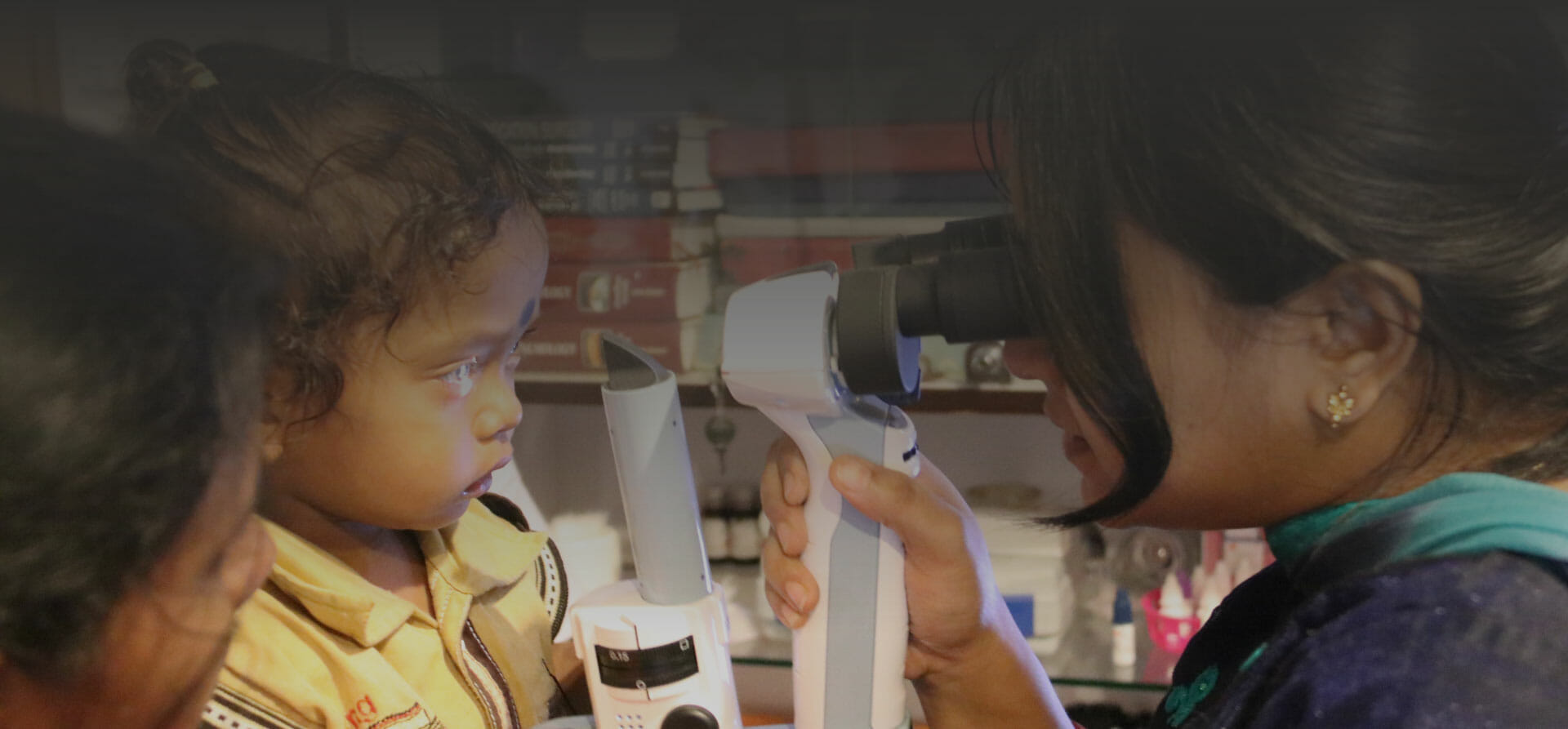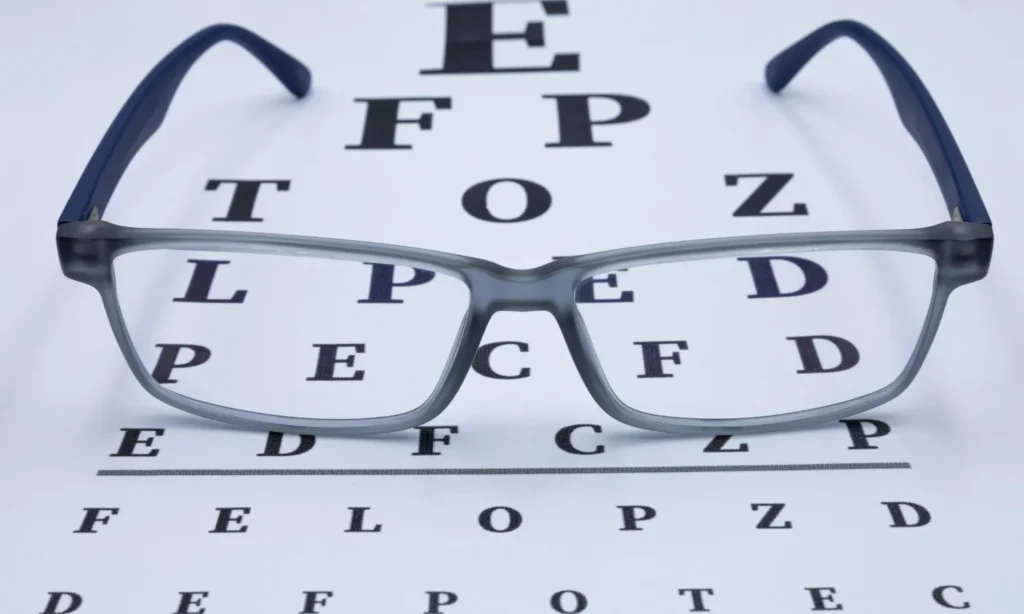Have you ever wondered what it means to have perfect vision? Imagine seeing everything clearly without any blur or strain. In this blog, we’ll explore everything about 6/6 vision, also known as the 20/20 vision. We’ll unravel what these numbers really mean for your eyesight, how you can maintain this clarity, and whether glasses are needed for slightly less sharp vision like 6/9. So, let’s clear up the confusion and discover how to keep your eyes healthy and your vision sharp!
Contents
- 1 Understanding 6/6 Vision and Its Meaning
- 2 How Is This Vision Measured?
- 3 Difference Between 6/6 and 6/9 Vision
- 4 6/6, 6/9, 6/12 Vision: Understanding Visual Acuity
- 5 Your Help Can Make a Difference!
- 6 Can I Improve My Eyesight from 6/9 to 6/6?
- 7 Maintaining Perfect Vision: Tips for Healthy Eyes
- 8 Your Contribution Can Help The Needy
Understanding 6/6 Vision and Its Meaning

6/6 vision, often referred to as 20/20 vision in some regions, indicates normal visual acuity. It means that a person can see at 6 meters what a person with normal vision can see at 6 meters. In other words, they can perceive details clearly without the aid of corrective lenses. This standard measurement is crucial in assessing the sharpness and clarity of one’s eyesight.
Achieving 6/6 or 20/20 vision is a sign of good eye health and visual function. It indicates that the eyes can focus light precisely onto the retina, allowing for clear and sharp vision. Understanding this standard helps individuals and eye care professionals gauge the quality of vision and detect any potential issues early on.
How Is This Vision Measured?
Vision, specifically 6/6 or 20/20 vision, is measured using a standardized chart called the Snellen Chart. This chart consists of rows of letters, numbers, or symbols of varying sizes. When you visit an eye specialist, they will ask you to stand or sit at a specific distance from the chart, usually 6 meters (or 20 feet in the US).
Here’s how it works: The smallest line of text that you can read accurately determines your visual acuity. For instance, if you can read the line that most people with normal vision read at 6 meters, you have 6/6 vision. If you can only read it at 9 meters, your vision would be noted as 6/9.
The Snellen Chart helps eye care professionals assess your ability to see details clearly at a distance, which is crucial for determining if corrective lenses or other treatments are necessary.
Difference Between 6/6 and 6/9 Vision
Visual acuity is measured using a fraction, with 6/6 indicating normal vision. If someone has 6/9 vision, it means they can see at 6 meters what a person with normal vision sees at 9 meters. Here’s a breakdown of the differences:
- 6/6 Vision
This is considered normal vision. A person with 6/6 vision can see details clearly at 6 meters that a person with normal vision would also see at 6 meters. - 6/9 Vision
Someone with 6/9 vision needs to be at 6 meters to see what a person with normal vision can see at 9 meters. This indicates slightly reduced visual acuity compared to 6/6 vision.
Does 6/9 Vision Typically Require Glasses?
Whether or not someone with 6/9 vision needs glasses depends on various factors such as their daily activities, the clarity of vision required for tasks, and their eye health. Some individuals with 6/9 vision may benefit from glasses or corrective lenses to enhance their visual clarity and quality of life.
6/6, 6/9, 6/12 Vision: Understanding Visual Acuity
- 6/6 Vision
This corresponds to approximately 0.00 diopters of refractive error, indicating normal or excellent vision without the need for corrective lenses. - 6/9 Vision
This equates to approximately -0.75 diopters of refractive error, suggesting mild myopia (nearsightedness) or astigmatism that may require corrective lenses for optimal vision. - 6/12 Vision
This translates to approximately -1.00 diopters of refractive error, indicating moderate myopia or astigmatism, where corrective lenses are often needed to achieve clearer vision at a distance.
These diopter values provide a quantitative measure of the refractive error associated with each level of visual acuity, helping to understand the degree of nearsightedness or other refractive conditions present.

Your Help Can Make a Difference!
Cataract Is The Biggest Reason For Blindness!
With Every Donation, You’re Gifting a Cataract Surgery To Someone in Need!
Can I Improve My Eyesight from 6/9 to 6/6?
Improving eyesight from 6/9 to 6/6 is possible for some individuals through various methods aimed at enhancing visual acuity. Here are key considerations:
- Vision Correction: Corrective lenses such as glasses or contact lenses can often improve visual acuity from 6/9 to 6/6. An optometrist or ophthalmologist can prescribe the appropriate lenses based on the specific needs of your eyes.
- Refractive Surgery: Procedures like LASIK or PRK (Photorefractive Keratectomy) are options for individuals seeking permanent vision correction. These surgeries reshape the cornea to correct refractive errors, potentially improving vision to perfect or better.
- Eye Exercises and Therapy: Certain eye exercises and vision therapy techniques may help improve visual focus and coordination, which can contribute to better visual acuity over time.
- Healthy Lifestyle Choices: Maintaining a healthy lifestyle, including a balanced diet rich in eye-friendly nutrients and regular eye check-ups, can support overall eye health and potentially improve vision.
Consulting with an eye care professional is crucial to determine the most suitable approach for improving your eyesight from 6/9 to 6/6 and maintaining optimal eye health.
Maintaining Perfect Vision: Tips for Healthy Eyes
Achieving and preserving a perfect vision requires proactive care and healthy habits. Here are essential tips to maintain optimal eye health:
- Regular Eye Check-ups: Schedule regular visits to an optometrist or ophthalmologist for comprehensive eye exams. Early detection of eye conditions can prevent vision loss and maintain clarity.
- Protective Eyewear: Wear appropriate eyewear, such as sunglasses with UV protection outdoors and safety glasses during activities that pose risks to eye injury.
- Healthy Diet: Consume a balanced diet rich in vitamins C and E, omega-3 fatty acids, zinc, and lutein. These nutrients support eye health and reduce the risk of age-related vision problems.
- Avoid Smoking: Smoking increases the risk of developing cataracts, macular degeneration, and other eye diseases. Quitting smoking promotes better eye health.
- Manage Screen Time: Limit prolonged exposure to digital screens. Follow the 20-20-20 rule—take a 20-second break every 20 minutes and look at something 20 feet away—to reduce eye strain.
- Stay Hydrated: Drink plenty of water to maintain moisture in your eyes, reducing dryness and discomfort.
- Eye Exercises: Practice eye exercises to strengthen eye muscles and improve focus. Simple exercises include blinking, focusing on distant objects, and rolling your eyes gently.
- Sleep Well: Adequate sleep allows your eyes to rest and rejuvenate. Lack of sleep can lead to eye fatigue and strain.
By incorporating these habits into your daily routine, you can support healthy eyesight and preserve your vision for years to come. Regular monitoring and proactive eye care are key to maintaining optimal visual acuity.
Your Contribution Can Help The Needy

Imagine not being able to see clearly every day, struggling with imperfect vision that affects your ability to work, read, and enjoy life to the fullest. Many people around the world face this reality, longing to restore their vision but unable to afford the necessary treatments.
Your small gesture can make a world of difference! Your donations can help provide sight-restoring treatments to those in need through the Eye Mantra Foundation. Join hands with us to be the reason someone can see clearly again.
“Join Hands With Eye Mantra Foundation” and bring relief to those who need it most. Your contribution, no matter how small, can bring back their vision and transform their lives.
Click on the “Donate Now” button or use the QR code to start helping today.
